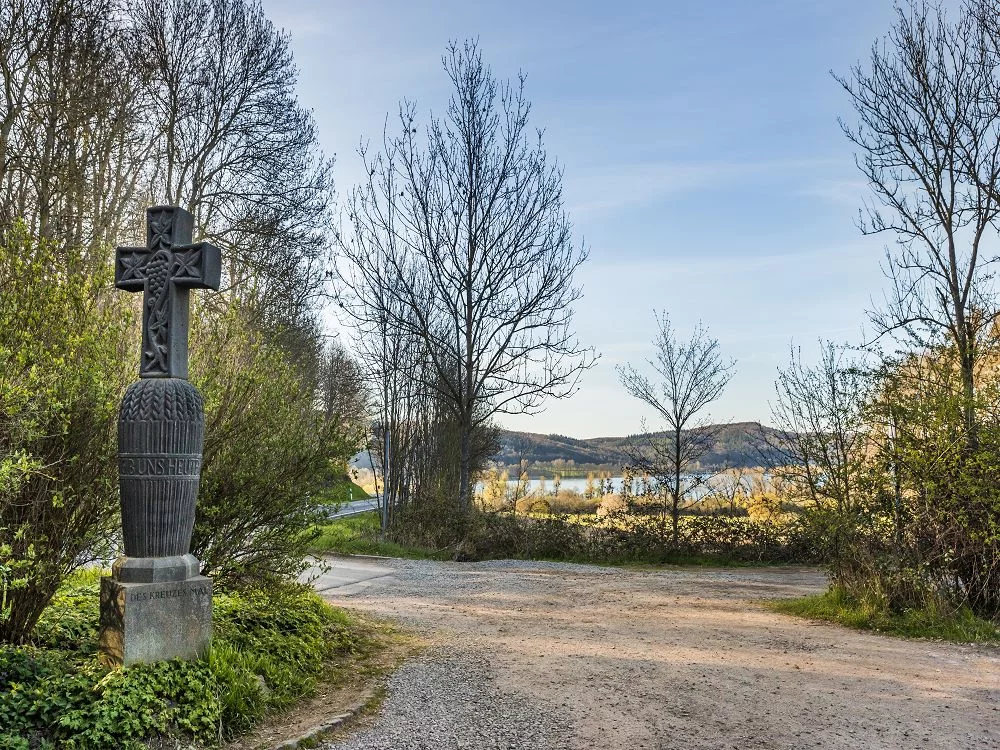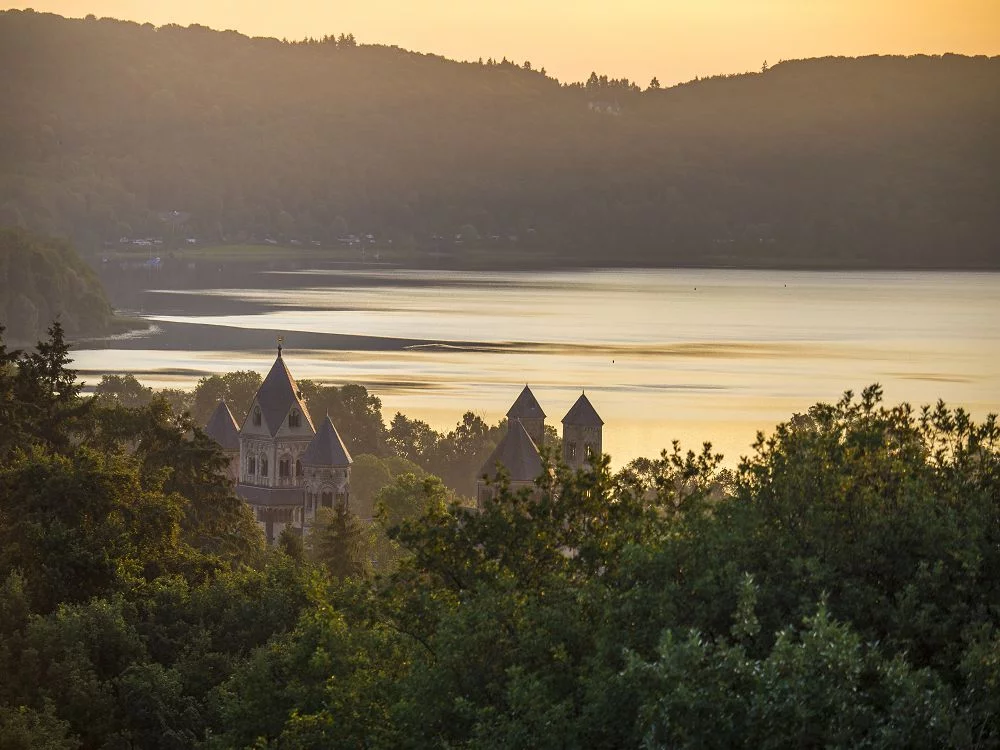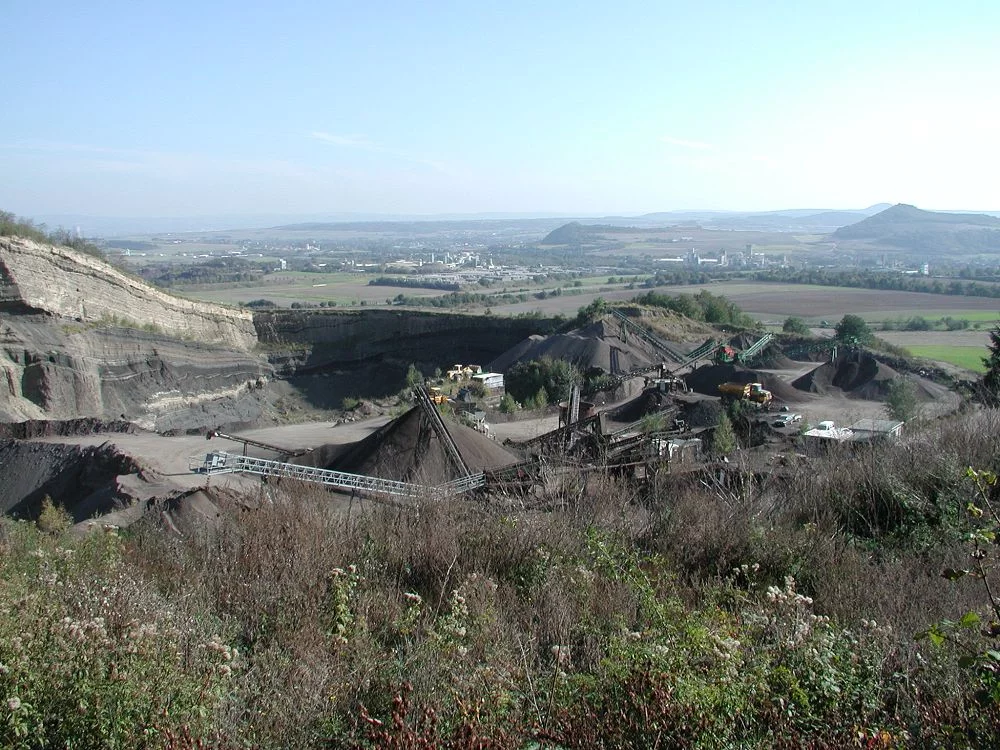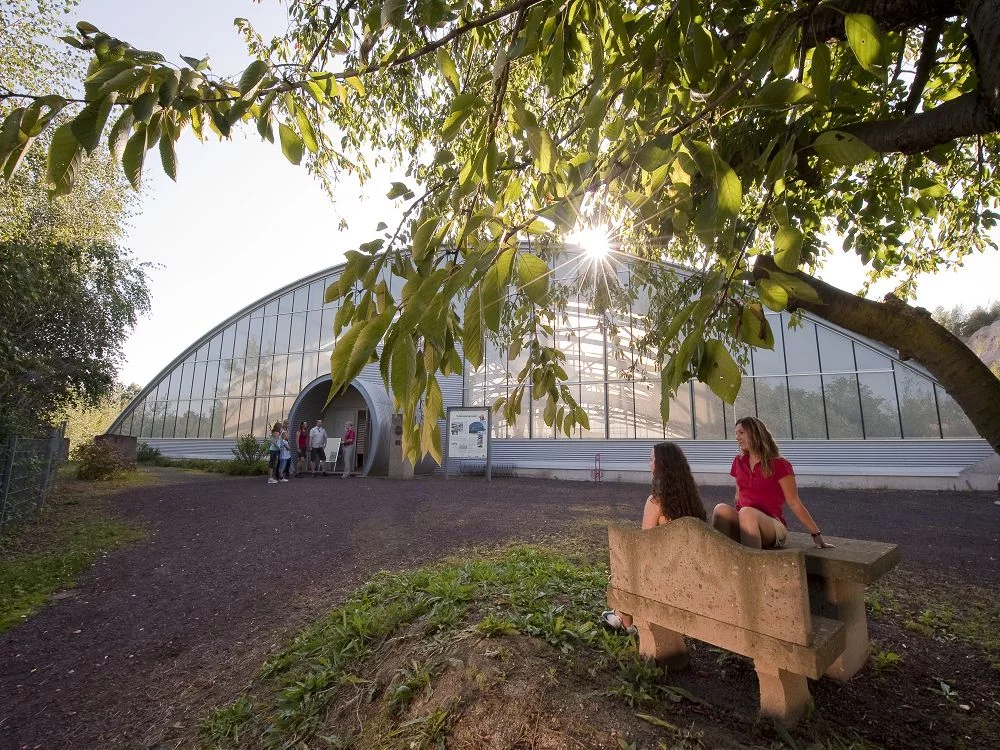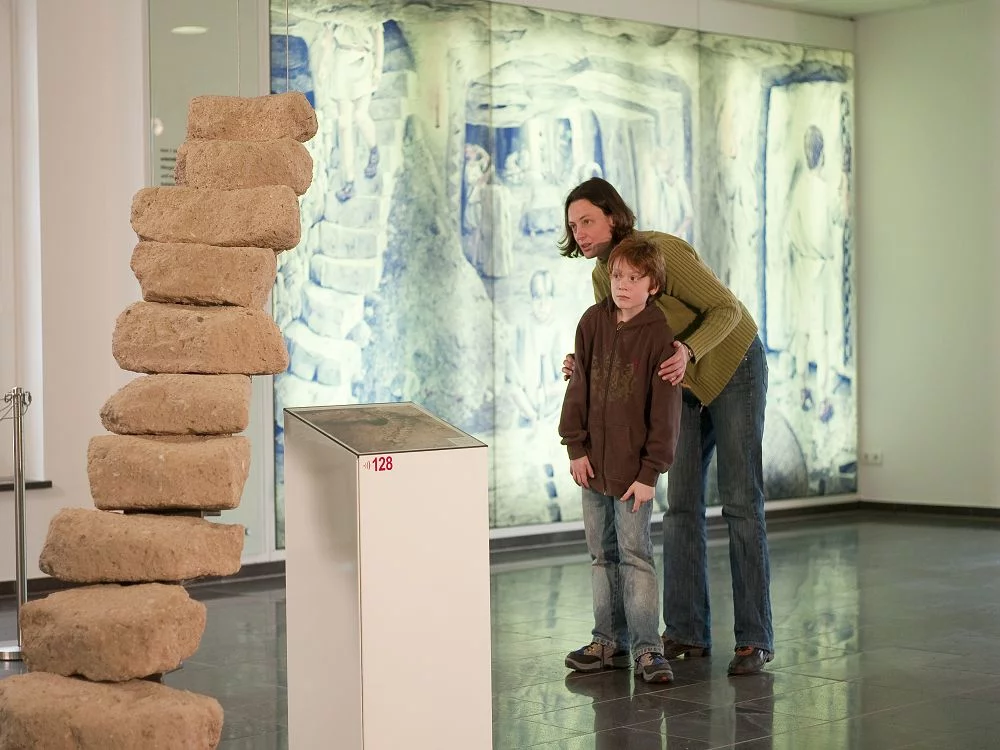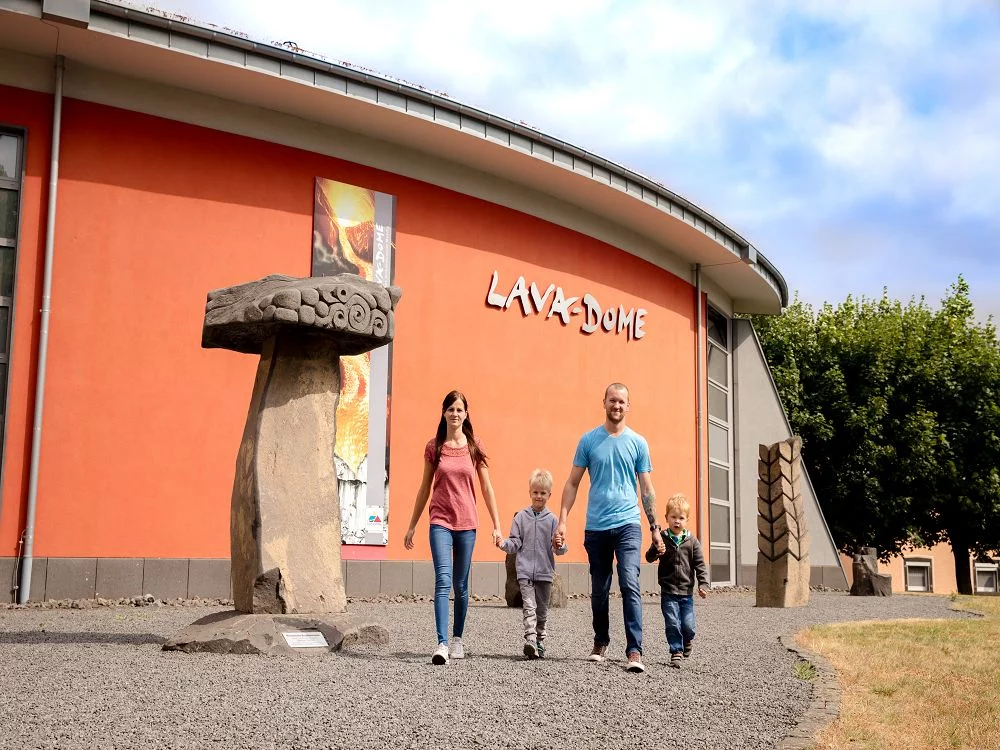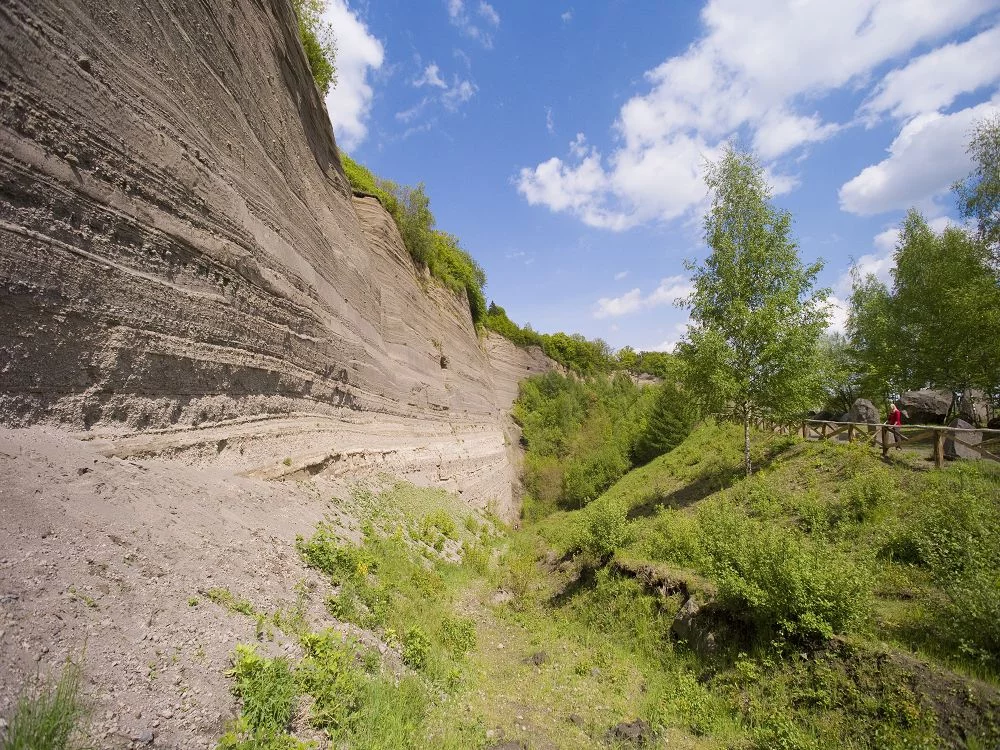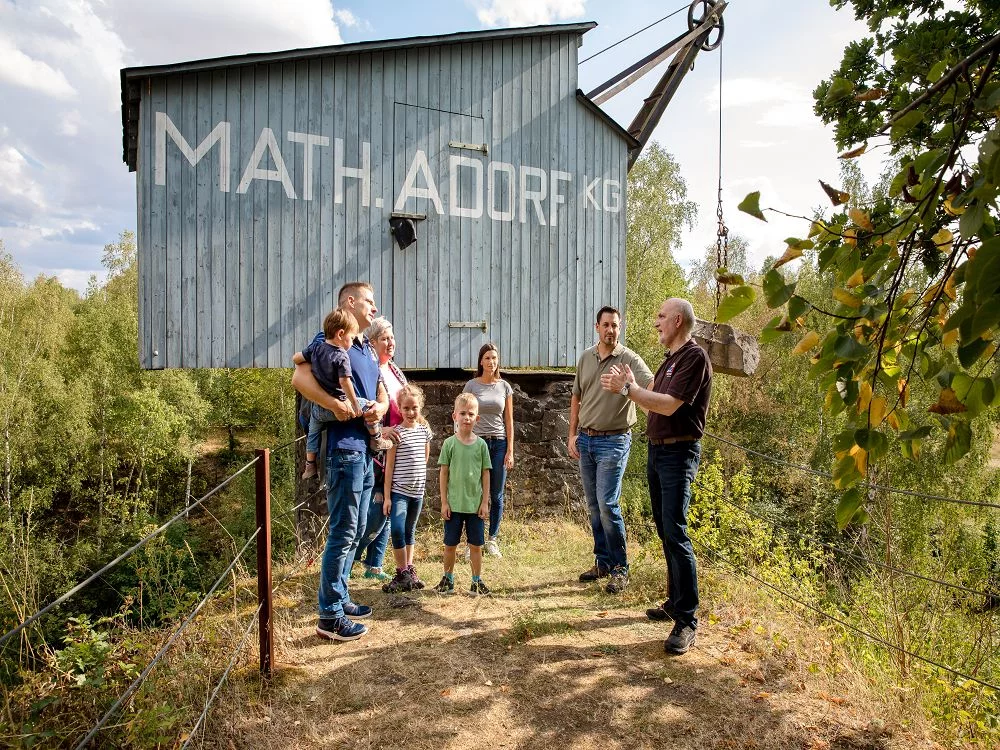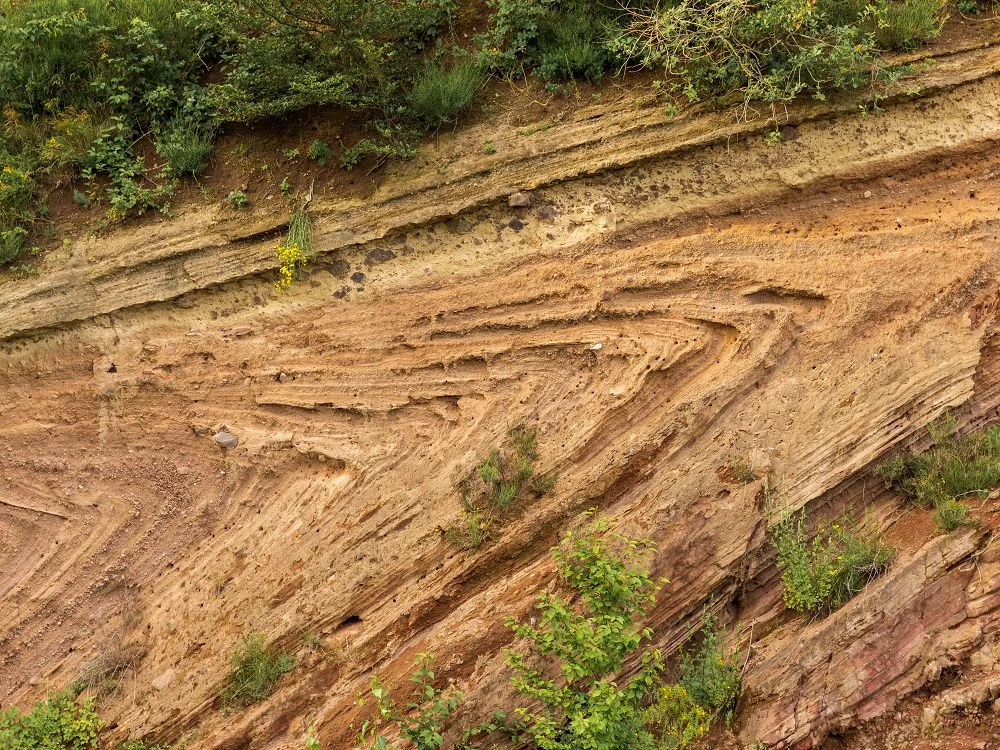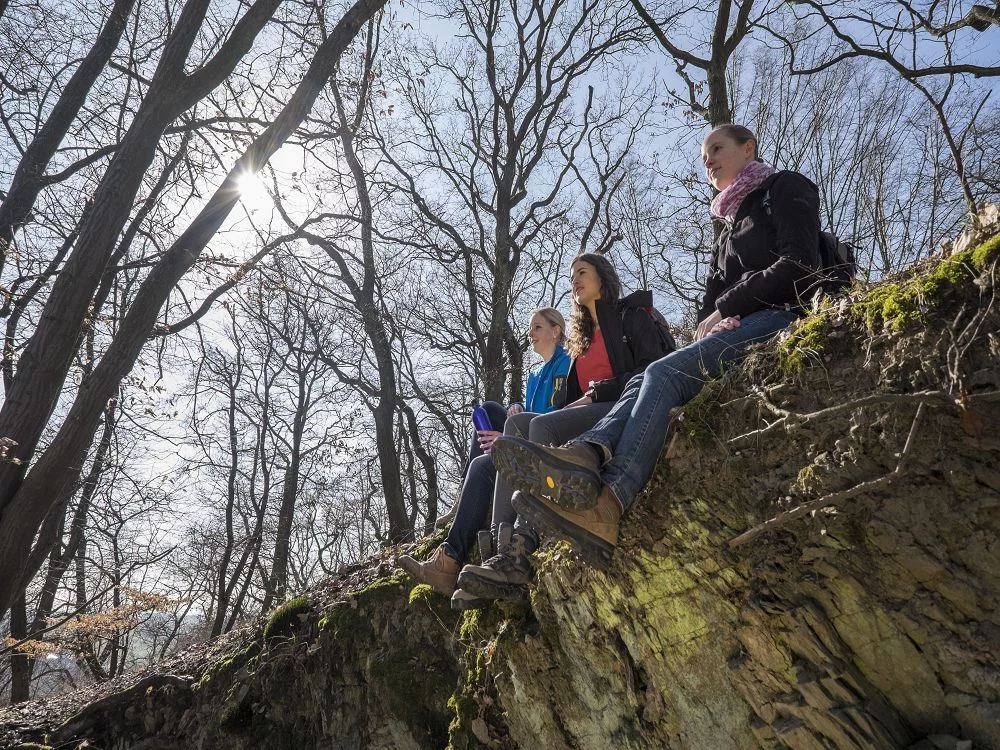A volcano erupts. Glowing drops of lava hurl out of the vent and fall onto other pieces of lava that have already been spewed out during the previous eruptions. The many pieces of lava melt together and cool down. This is the birth of the basalt cinder beds from which humans would draw their benefits thousands of years later. This is because the bubble-rich, porous rock is ideal for use as a millstone, as the constant abrasion constantly opens up new pores that keep the stone sharp. In the 13th century, quarrying began here at Rother Kopf, which was not so easy with the tools of the time.
The workers usually had to knock the millstones out of the rock face over their heads. An ever deeper groove is cut evenly all around between the rough form and the wall. When the stone is only connected to the wall by small bars, wooden wedges are pushed into the gaps. These swell due to soaking, break the last connections and the millstone is released from the wall.
Tip: You can explore the caves at your own risk. Please remember to bring a powerful flashlight and watch out for overhangs at head height.

